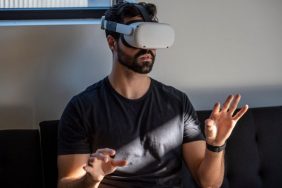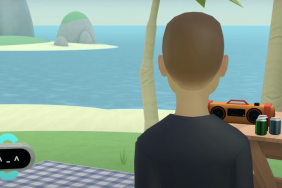Following last week’s E3 the virtual reality naysayers are out in full force, bemoaning the technology as either too expensive, too unwieldy or too gimmicky to really make a dent in the world of gaming, making negative comparisons to the video game industry’s short-lived flirtation with stereoscopic 3D.
But while 3D may have came and went in a burst of flames and failed to become the “future” of the industry that it was touted as being, virtual reality really could make an impact in the long-term even if VR headsets such as the Oculus Rift, Microsoft HoloLens and Sony’s Project Morpheus fail to drive in huge sales upon their respective releases. This is because the technology implemented in them remains fascinating, and outside of the world of video games it has many other intriguing applications, such as this new project that allows users to have an “out-of-body” experience using the Oculus Rift.
Also See: Apple Music Backtracks on Not Paying its Artists Following Taylor Swift’s Rant
The new project, devised by City University of Hong Kong Associate Professor Tobias Gremmler and student Adam Zecke, makes use of the Oculus VR and Microsoft’s Kinect motion sensor in order to provide the user with a sensation commonly referred to as an out-of-body experience or an “astral trip.” The video below demonstrates how the wearer of the Oculus headset, in this instance Adam Zecke, can see two point clouds rendered by the two Kinect sensors, one red and one white. These point clouds continue to project the Oculus wearer’s body in that location even as the wearer has moved away from them, thus allowing them to see their own body even as they’ve stepped away from it.
Speaking to VR Scout, Gremmler stated that “it is quite an intense experience, especially if one was wearing the headset for a longer time and gets used to the virtual representation.” This suggests that if those partaking in the experiment wear the Oculus for an extended period of time, their brain adapts to the abstract representation of the world that the project portrays. It’s all incredibly cool stuff, and it certainly warrants virtual reality being given a fairer shake than 3D.
While I’m not of the opinion that virtual reality will change our more “traditional” ways of interacting with our environment, such as using standard controllers to play our video games or watching films on TV or in theaters, I certainly predict that it’ll serve as a wonderful supplement for those who have the money to invest in it. For everyone else, as the tech advances it should lower in price, thus meaning that eventually the majority of people who wante to jump on the VR bandwagon should hopefully get the opportunity to do so.









